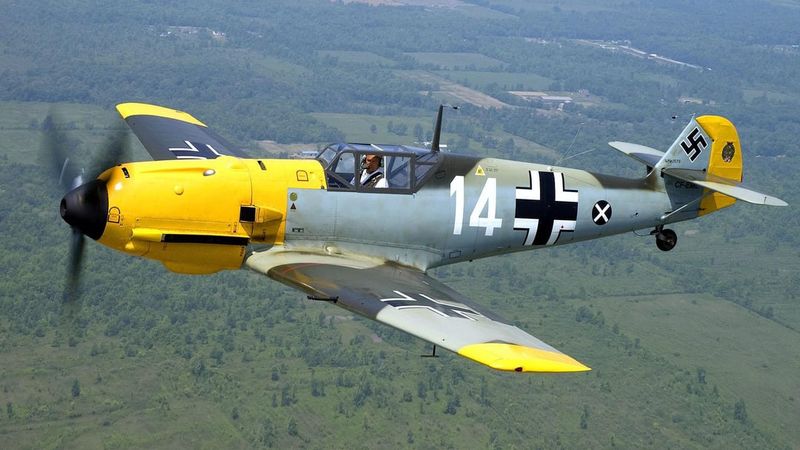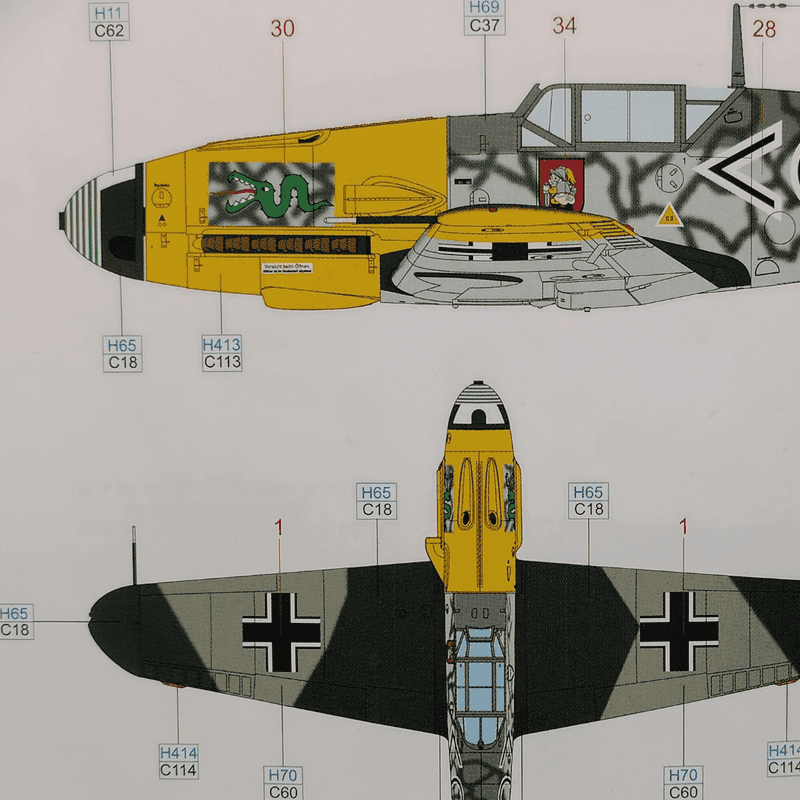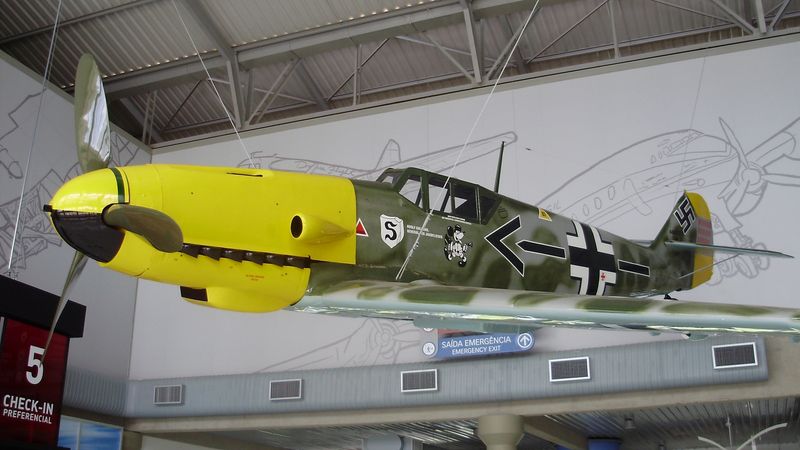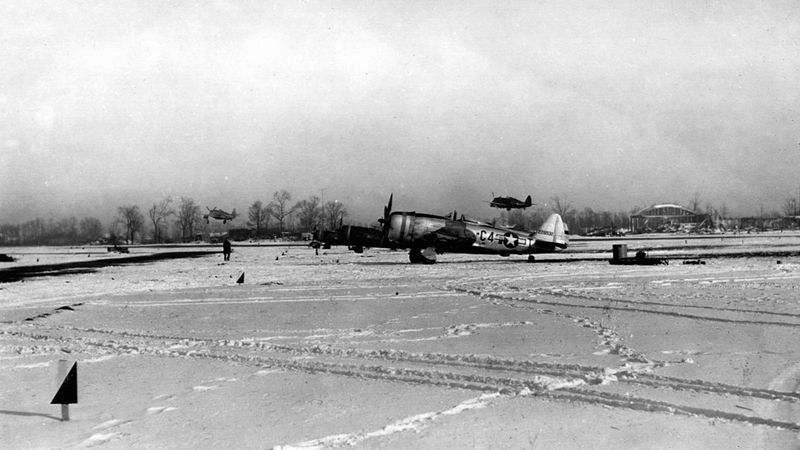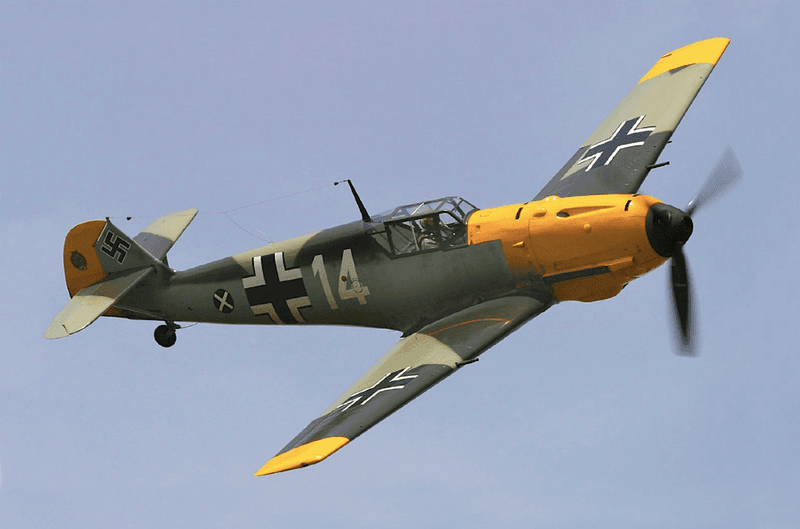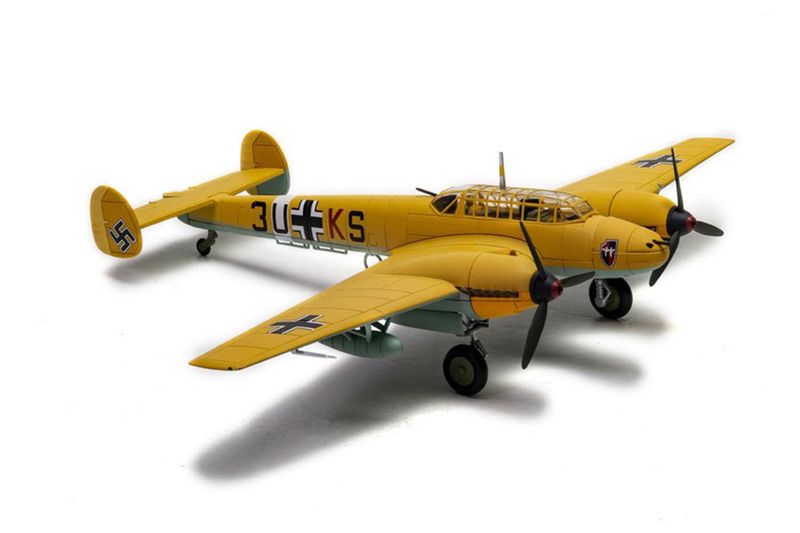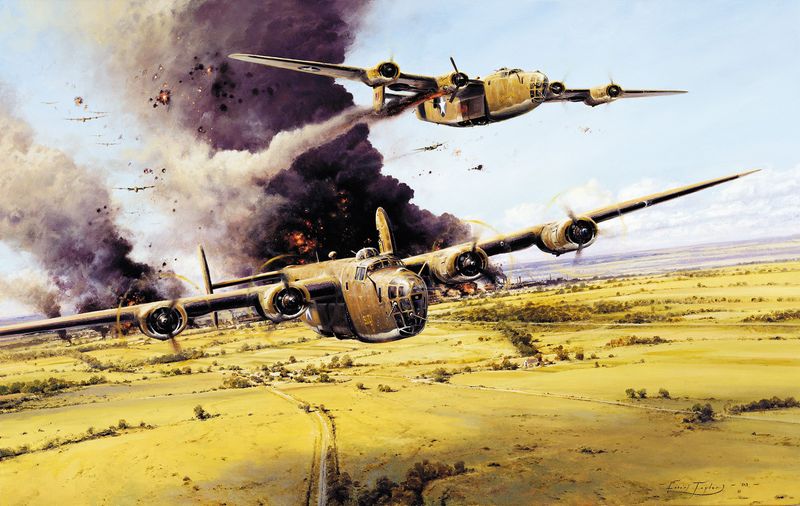During World War II, the German Luftwaffe used yellow paint on their aircraft for various strategic and psychological reasons. This bright color became a signature mark on many German planes, particularly during the intense aerial battles over Europe and the Eastern Front. These yellow markings served multiple functions, from tactical identification to psychological warfare. Here, we explore seven distinct reasons why this eye-catching color was employed on German aircraft during the war.
1. Quick Identification for Friendly Forces
In the chaos of aerial combat, misidentification was a constant threat. German aircraft bore yellow paint on the nose, wingtips, or tail to prevent friendly fire. This distinct color quickly signaled to German anti-aircraft crews and fellow pilots, “This is one of ours!” In the skies over Europe and the Eastern Front, where enemy and ally aircraft could look similar, this yellow hue was a lifesaver. Ground crews could quickly identify incoming planes without confusion, a crucial advantage in fast-paced dogfights and during surprise encounters with the enemy.
2. Tactical Signaling on the Eastern Front
Yellow markings took on an essential role on the Eastern Front against the Soviet Union. Amidst the vast skies filled with aircraft, quick recognition was vital. The yellow acted as a simple yet effective battlefield signal. For surprise or mass assaults, these bright markings enabled rapid communication between pilots, improving coordination during intense operations. The Eastern Front, with its unique challenges and demands, saw the yellow paint become almost a tactical necessity. It wasn’t just for show—it was a tool for survival in a chaotic aerial theater.
3. Squadron and Unit Differentiation
The Luftwaffe had a complex system of squadron and unit markings, with yellow being a prominent color for certain groups. These color-coded markings served organizational purposes, allowing quick visual identification. For ground crews, commanders, and pilots alike, yellow indicated specific Jagdgeschwader fighter wings. This differentiation wasn’t merely for aesthetics but was a practical necessity. In the heat of battle, recognizing your squadron at a glance could mean the difference between life and death. Yellow became one of the many hues in this efficient identification system.
4. Psychological Warfare and Intimidation
Bold and eye-catching, yellow paint made German aircraft stand out, serving as a psychological tool. The sight of the bright yellow was intimidating to enemy pilots and ground troops. Early in the war, this flash of color became synonymous with the Luftwaffe’s aggressive tactics and speed. The psychological impact was significant, adding another layer to Germany’s air warfare strategy. Seeing the yellow markings approach meant the feared Luftwaffe was near, sometimes causing panic before engagement even began. This psychological edge was a cunning addition to their arsenal.
5. Camouflage Tradeoff in Air Superiority
While yellow isn’t ideal for concealment, the Luftwaffe chose visibility over stealth in many cases. Once air superiority was established, concealing aircraft became less critical than ensuring quick recognition and coordination. The bright yellow markings facilitated communication and identification among pilots engaged in fighter sweeps. Air dominance allowed for such tradeoffs, where the benefit of rapid visual recognition outweighed the risk of being seen. This strategic choice played into the larger narrative of the Luftwaffe’s tactical evolution throughout the war.
6. Compliance with Theater-Specific Regulations
Operational theaters like North Africa and the Eastern Front had specific regulations requiring yellow paint. These orders were driven by the need for easier visual control and battlefield management. Different theaters had different requirements, reflecting the changing tactical needs of the Luftwaffe across various environments. The yellow color was not just a preference but a regulation in some areas, dictated by the strategic demands of the time. This compliance with theater-specific rules ensured the Luftwaffe could maintain cohesion and effectiveness across its diverse operations.
7. Makeshift Field Modifications
In the unpredictable conditions of war, many German planes received yellow paint through makeshift methods using whatever materials were available. Sometimes, these were just a stripe or a tail marking, applied hastily in response to immediate orders. These improvised markings were born from necessity, reflecting the on-the-fly decisions of commanders seeking better coordination. This adaptability was characteristic of the Luftwaffe’s approach to warfare, where practicality often dictated actions. Such field modifications underscore the dynamic and reactive nature of wartime aviation strategy.

